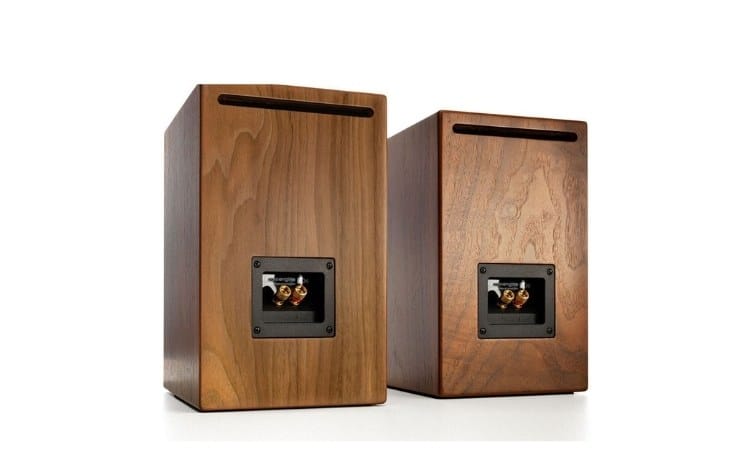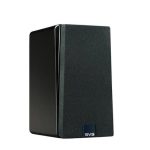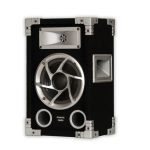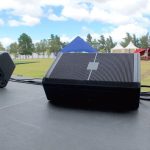In any audio system, you’ll need a speaker to produce audible sound from a sound source, be it a microphone or receiver. Speakers are categorized into two major types active speakers and passive speakers. Active speakers are speakers that come with a built-in amplifier. Thus, they don’t need any connection to an external amplifier. You only need to connect them to an electric power source and an audio source.
On the other hand, passive speakers aren’t powered internally. They require external power from other components such as receivers, mixers, and amplifiers. Thus, they only need a single connection to an audio source. They’re not connected to the mains’ power like active speakers. Although passive speakers sound best when connected to an external amplifier, what would you do if you don’t have an amplifier? Maybe your budget doesn’t allow you to buy an amplifier at the moment or your amplifier is damaged beyond repair. In this article, you’ll learn how to power passive speakers without an amp.
Do Passive Speakers Need an Amp?
Basically, the role of an amplifier is to make a weak sound signal louder and stronger. Passive speakers lack a built-in amp system. Thus, amplifiers come in handy to feed them with enough power for a high-quality and loud sound. However, it’s still possible to power speakers without an amp. To do this, you’ll need to connect your passive speakers to an AV receiver, a powered mixer, an active subwoofer, or a PC.
1. How to Power Passive Speakers with an AV Receiver
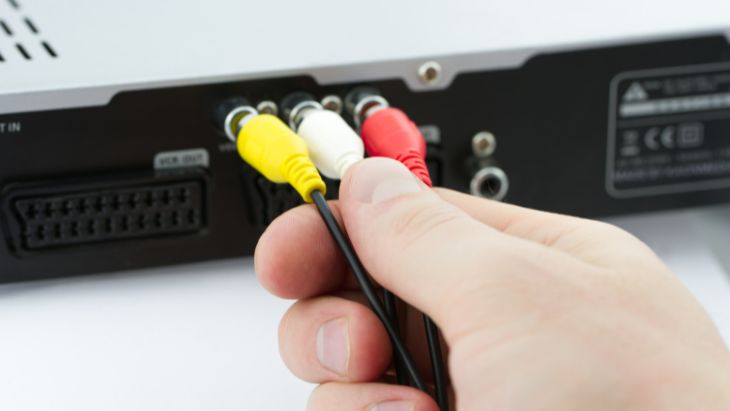
You can easily connect your passive speakers directly to an AV receiver. If you have a powerful AV receiver, then you can do without a standalone amplifier. Most AV receivers come with a built-in amplifier. Thus, the receiver can process and amplify sound signals to your passive speakers.
In this case, connect your passive speaker to the zone 2 ports on your receiver. However, an AV receiver may not be very powerful to feed extremely powerful passive speakers. Just ensure the speaker you’re connecting has a power rating that can be sufficiently fed with the receiver.
2. How to Power Passive Speakers with a Powered Mixer
Most powered speakers come with a built-in amplifier. The built-in amplifier can power your passive speakers directly. Mixers are specially designed to process sound signals from a sound source to output high-quality sound.
Most mixers have ¼-inch outputs or XLR. Choose a speaker cable depending on the kind of output on your mixer. Once you get the right speaker cable, connect the speaker to the mixer. Ensure you tune the mixer properly for the best sound output.
3. How to Power Passive Speakers with an Active Subwoofer
If you don’t have a mixer, or your receiver doesn’t have a built-in amplifier, or the amplifier in your receiver or mixer is relatively weak to power your passive speakers, then connect the speakers to an active subwoofer. If you have an active subwoofer, it’ll feed your passive speakers with sufficient power without needing an external amplifier. Active subwoofers have a built-in amplifier that’s often powerful.
To connect your passive speakers to the amplifier, connect a speaker cable to the speaker outputs on the subwoofer. Connect the other end of the speaker cable to your speaker. Most active subwoofers have speaker outputs for the left and right speakers. Thus, the number of speakers to connect may be limited to just two passive speakers.
4. How to Power Passive Speakers with a PC
A PC comes with a 3.5mm output that you can connect to headphones or external speakers. However, a PC may not be powerful enough to power big passive speakers. The best passive speakers to power a PC without an amp are small bookshelf speakers. Thus, if you’re dealing with small passive bookshelf speakers, this method can work for you. However, if you’re dealing with powerful speakers, consider the previous options.
Factors to Consider When Powering Passive Speakers without an Amplifier
Essentially, passive speakers require an external source of power. It’s obvious that an amplifier would be your best bet to power passive speakers. If you don’t have an amplifier, you can still connect your passive speakers through other means as discussed above. However, there’re certain things you need to know before connecting your speakers to other sound sources. Consider the following factors:
1. Power rating and size of the speakers
Generally, larger speakers produce louder sounds than smaller speakers. Consequently, they require more power to maximize their full potential. Since you want to power speakers without an amp, ensure the sound source is powerful enough to power the speakers. If you’re buying new passive speakers to connect them to a sound source without an amp, ensure the power rating of the speakers you choose can be supported by the sound source.
2. Type of source component
If you don’t have an external amp, then consider connecting passive speakers to a powered source component. This means that the source component should have a built-in amplifier such as a powered mixer, powered subwoofer, or an AV receiver that has a built-in amp. However, if the source component is not powered, then you’ll have trouble connecting passive speakers as they will be underpowered.
3. Impedance rating of the speaker
It’s important to check the impedance rating of the passive speaker, especially if you want to power it with a PC or any other low-powered source device. Speaker impedance is denoted in ohms. A higher impedance rating means that the speaker draws a lower amount of current from a sound source. On the other hand, a lower impedance rating means that the speaker draws a higher amount of current from a sound source.
When connecting speakers to a PC, you should ensure the speaker has a high impedance rating, such as an 8 ohms or 16 ohms impedance rating. If you connect speakers with a low impedance such as 4 ohms to your PC, the speaker can damage the headphone port on your PC.
Conclusion
If you’re wondering how to power passive speakers without an amp, you can see it’s possible. Just ensure the source component is powerful enough to feed the speakers with sufficient power. For the best results, ensure the source component has a built-in amplifier. Else, you won’t get the best sound quality.
Michael Evanchuk is a San Francisco-based sound engineer with 20 years’ experience installing, troubleshooting, and repairing commercial, automotive, and household sound equipment. Evanchuk owns an auto stereo center, where he offers highly competitive car audio installation and repair services. He has written dozens of articles on different sound engineering topics, all of which have been published in leading journals, blogs, and websites.

